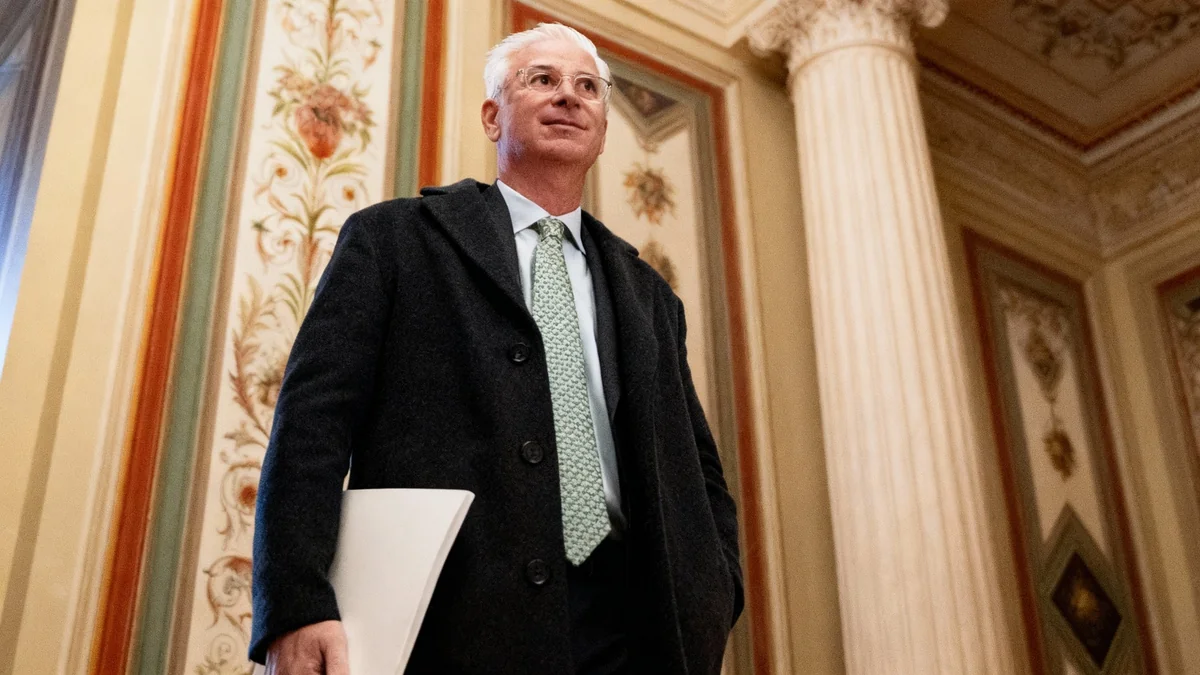Wells Fargo & Co. Chief Executive Officer Charlie Scharf addressed growing concerns in the financial sector regarding the private credit market. He suggested that while risks exist, they do not currently pose a major systemic threat to the broader banking industry.
Scharf's comments aim to provide a nuanced perspective amid heightened market sensitivity. Recent incidents of alleged loan fraud have placed the booming private credit space under intense scrutiny, raising questions about its stability and potential impact on traditional lenders.
Key Takeaways
- Wells Fargo CEO Charlie Scharf stated that risks in the private credit market are not uniform and should be assessed individually.
- He believes the rapid expansion of private credit is not creating significant systemic issues for the banking system at this time.
- The discussion comes as Wall Street debates the strength of the credit market following several alleged loan fraud cases.
- Scharf's position suggests a major bank's viewpoint that the situation, while worth monitoring, is not a cause for widespread alarm.
A Measured View on a Booming Market
The private credit market, which involves non-bank lenders providing loans directly to companies, has expanded dramatically in recent years. This growth has attracted significant capital as investors seek higher yields in a low-interest-rate environment. However, this rapid expansion has also brought concerns about transparency and risk management.
Charlie Scharf cautioned against generalizing the risks across the entire sector. He emphasized that the issues surrounding private credit should not be viewed with a single, broad brush. This perspective suggests that problems may be isolated to specific deals or lenders rather than indicative of a fundamental flaw in the market itself.
His remarks offer a counterpoint to the more alarmist views circulating on Wall Street. While some analysts worry about a potential credit bubble, Scharf’s assessment from the helm of one of America's largest banks implies a more controlled and manageable risk profile.
What Is Private Credit?
Private credit, also known as direct lending, is a form of non-bank lending where funds and other institutions provide loans to companies. It has become a popular alternative to traditional bank loans or public debt markets. This sector has grown to over $1.5 trillion globally, fueled by demand from medium-sized businesses and investors searching for attractive returns.
Navigating Recent Market Jitters
The financial community's focus on credit markets intensified recently after a third case of alleged loan fraud surfaced since early September. These incidents caused investors to become nervous, leading to writedowns at some regional banks and sparking a broader debate about potential weaknesses in the credit system.
Despite a generally strong credit environment, these events have served as a reminder of the potential for unforeseen risks. The incidents have specifically highlighted concerns about due diligence and the potential for fraud in less regulated corners of the lending market.
"Worry is a strong word," Scharf noted, indicating a level of caution rather than outright fear. This careful choice of words reflects the delicate balance leaders of major financial institutions must strike between acknowledging risks and preventing unnecessary panic.
The debate on Wall Street now centers on whether these fraud cases are isolated events or the first signs of deeper cracks appearing in the foundation of the credit market. Scharf's commentary leans toward the former, suggesting that the system as a whole remains resilient.
The Banking Sector's Exposure
A primary concern for regulators and investors is the potential for spillover effects from the private credit market into the traditional banking system. Banks often have indirect exposure to private credit through various channels, including providing financing to private credit funds or lending to the same companies.
Scharf's position is that these connections are not currently creating major systemic issues for banks like Wells Fargo. This implies that large, regulated financial institutions have adequate risk management frameworks in place to insulate themselves from potential turmoil in the private lending space.
Market Growth and Scrutiny
- The private credit market has more than doubled in size since 2018.
- Unlike public markets, private credit deals are not as transparent, making risk assessment more complex.
- Regulators globally have started to pay closer attention to the sector's rapid growth and its potential systemic implications.
However, the situation remains fluid. The interconnectedness of the modern financial system means that problems in one area can quickly spread. While a major bank CEO's confidence is reassuring, market participants will continue to watch for any signs that the risks are escalating or becoming more widespread.
Future Outlook for Credit Markets
The ongoing discussion highlights a pivotal moment for the credit markets. The era of easy money is giving way to a more challenging economic environment with higher interest rates and slower growth. This shift will inevitably test the resilience of all forms of lending, both public and private.
For now, the message from one of the industry's top executives is one of vigilance, not alarm. The focus will likely remain on individual risk assessment and careful monitoring of the evolving landscape. Banks and investors will need to differentiate between well-structured, sound lending and riskier propositions that may falter under economic pressure.
Ultimately, the long-term health of the private credit market will depend on the discipline of its participants and their ability to navigate economic cycles. Scharf's comments suggest that while bumps in the road are expected, a full-blown crisis is not the base-case scenario for major banking institutions.





